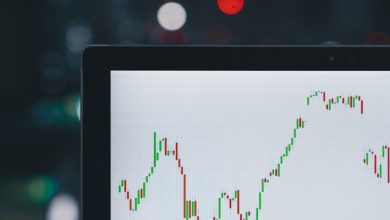Understanding Crypto Market Cycles: Timing Your Investments

- What are Crypto Market Cycles and Why They Matter
- The Psychology Behind Market Cycles in Cryptocurrency
- Strategies for Identifying Key Points in the Crypto Market Cycle
- Common Mistakes to Avoid When Timing Your Crypto Investments
- The Role of Market Sentiment in Crypto Market Cycles
- Tools and Indicators for Timing Your Cryptocurrency Investments
What are Crypto Market Cycles and Why They Matter
Crypto market cycles refer to the recurring patterns of growth, peak, decline, and bottoming-out that cryptocurrencies experience over time. These cycles are driven by various factors such as market sentiment, regulatory developments, technological advancements, and macroeconomic trends. Understanding these cycles is crucial for investors as it can help them make informed decisions about when to buy, sell, or hold their digital assets.
By analyzing past market cycles, investors can identify patterns and trends that may help predict future price movements. This can provide valuable insights into when to enter or exit the market, maximizing profits and minimizing losses. Timing investments based on market cycles can also help investors avoid buying at the peak of a bubble or selling during a downturn, which can result in significant losses.
Moreover, being aware of crypto market cycles can help investors manage their risk exposure and diversify their portfolios. By spreading investments across different assets and adjusting their positions based on market cycles, investors can reduce the impact of volatility and protect their capital. This strategic approach can lead to more stable returns over the long term and help investors navigate the unpredictable nature of the cryptocurrency market.
In conclusion, crypto market cycles are a fundamental aspect of the cryptocurrency market that all investors should be aware of. By understanding these cycles and their implications, investors can make more informed decisions, optimize their investment strategies, and ultimately increase their chances of success in the highly volatile world of cryptocurrencies.
The Psychology Behind Market Cycles in Cryptocurrency
Understanding the psychology behind market cycles in cryptocurrency is crucial for investors looking to time their investments effectively. Market cycles in the crypto space are driven by a combination of factors, including investor sentiment, fear, and greed.
During the bull market phase, investors are optimistic about the future of a particular cryptocurrency, driving prices higher. This phase is characterized by euphoria, as investors rush to buy in anticipation of further price increases. However, this optimism can quickly turn into fear when prices start to decline.
As prices fall during the bear market phase, investors become increasingly anxious and may start selling their holdings out of fear of further losses. This fear can create a self-reinforcing cycle of selling, leading to further price declines. Eventually, prices reach a bottom, and the cycle begins anew.
Understanding these market cycles can help investors make more informed decisions about when to buy and sell cryptocurrencies. By recognizing the emotional drivers behind market movements, investors can avoid getting caught up in the hype of a bull market or the panic of a bear market.
Strategies for Identifying Key Points in the Crypto Market Cycle
There are several strategies to help investors identify key points in the crypto market cycle. By understanding these strategies, investors can make more informed decisions about when to buy or sell their investments.
- 1. Historical Data Analysis: One strategy is to analyze historical data to identify patterns in the market cycle. By looking at past trends, investors can gain valuable insights into potential future movements.
- 2. Technical Analysis: Another strategy is to use technical analysis tools to identify key points in the market cycle. By analyzing charts and indicators, investors can spot trends and make predictions about future price movements.
- 3. Market Sentiment Analysis: Monitoring market sentiment can also help investors identify key points in the crypto market cycle. By keeping an eye on news and social media, investors can gauge the overall mood of the market and make decisions accordingly.
- 4. Fundamental Analysis: Fundamental analysis involves looking at the underlying factors that can impact the value of a cryptocurrency. By considering factors such as technology, team, and adoption, investors can assess the long-term potential of an investment.
- 5. Diversification: Diversifying a crypto portfolio across different assets can help investors manage risk and capitalize on opportunities in various parts of the market cycle.
By combining these strategies and staying informed about the latest developments in the crypto market, investors can increase their chances of success and navigate the market cycle more effectively.
Common Mistakes to Avoid When Timing Your Crypto Investments
When it comes to timing your crypto investments, there are several common mistakes that investors should avoid to maximize their returns. One of the biggest mistakes is trying to time the market perfectly, which is nearly impossible even for experienced traders. Instead of trying to predict short-term price movements, it’s important to focus on the long-term potential of the project you’re investing in.
Another mistake to avoid is investing more money than you can afford to lose. Cryptocurrency markets can be highly volatile, and it’s crucial to only invest money that you’re willing to part with. Diversifying your investments across different projects can also help mitigate risk and protect your capital.
One common pitfall is following the crowd and investing based on hype or FOMO (fear of missing out). It’s essential to do your own research and due diligence before making any investment decisions. This will help you make informed choices based on the fundamentals of the project rather than emotional impulses.
Lastly, it’s important to have a clear exit strategy in place before investing in any cryptocurrency. Whether you’re looking to take profits at a certain price point or cut your losses if the market turns against you, having a plan will help you stay disciplined and avoid making impulsive decisions.
The Role of Market Sentiment in Crypto Market Cycles
Market sentiment plays a crucial role in driving crypto market cycles. The emotions and attitudes of investors towards a particular cryptocurrency can heavily influence its price movements. During periods of optimism, investors tend to buy more, driving prices up. Conversely, during times of pessimism, investors may sell off their holdings, leading to price declines.
Understanding market sentiment can be challenging as it is often driven by a variety of factors such as news events, social media trends, and overall market conditions. However, by analyzing sentiment indicators, investors can gain valuable insights into market dynamics and potentially make more informed investment decisions.
One key sentiment indicator in the crypto market is the Crypto Fear and Greed Index, which tracks the overall sentiment of market participants. High levels of fear may indicate oversold conditions, presenting a buying opportunity, while high levels of greed could signal overbought conditions, suggesting a potential sell-off.
It is important for investors to not only pay attention to market sentiment but also to evaluate it in conjunction with other fundamental and technical analysis tools. By taking a holistic approach to understanding market cycles, investors can better time their investments and potentially maximize their returns in the volatile world of cryptocurrencies.
Tools and Indicators for Timing Your Cryptocurrency Investments
Timing your cryptocurrency investments can be a challenging task, but there are tools and indicators that can help you make more informed decisions. By utilizing these resources, you can increase your chances of success in the volatile crypto market cycles.
One useful tool for timing your investments is the Relative Strength Index (RSI). The RSI is a momentum oscillator that measures the speed and change of price movements. By analyzing the RSI of a particular cryptocurrency, you can determine whether it is overbought or oversold, which can help you decide when to buy or sell.
Another important indicator to consider is the Moving Average Convergence Divergence (MACD). The MACD is a trend-following momentum indicator that shows the relationship between two moving averages of a cryptocurrency’s price. By analyzing the MACD line and signal line, you can identify potential buy or sell signals.
Additionally, keeping an eye on trading volume can provide valuable insights into market sentiment. High trading volume often indicates increased interest in a particular cryptocurrency, which can lead to price movements. By analyzing trading volume along with other indicators, you can gain a better understanding of market trends.
Overall, using tools and indicators such as the RSI, MACD, and trading volume can help you time your cryptocurrency investments more effectively. By staying informed and utilizing these resources, you can navigate the crypto market cycles with more confidence and potentially improve your investment outcomes.






